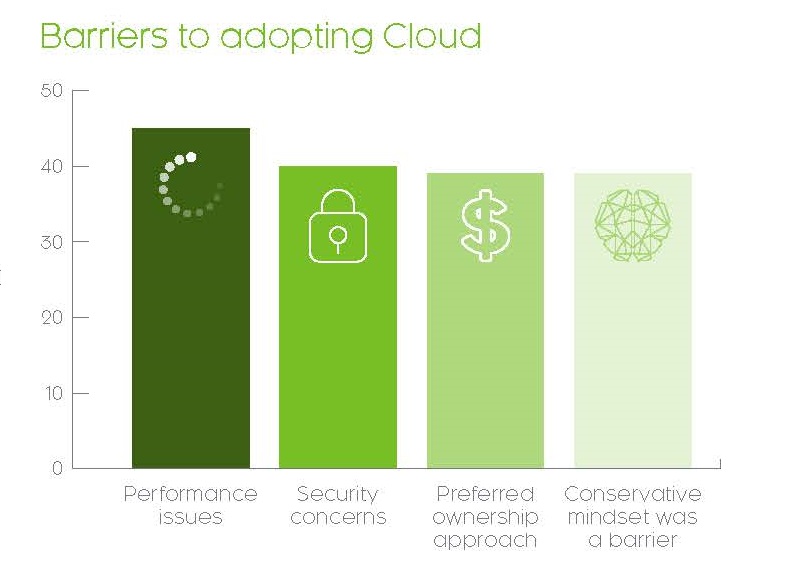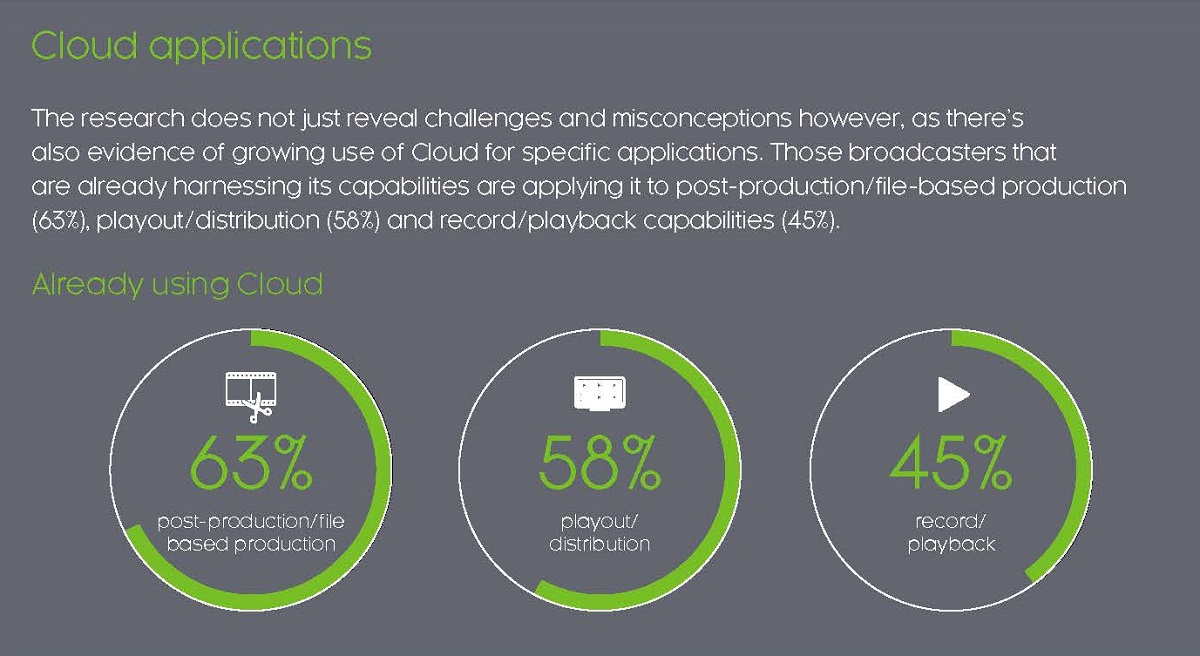
READ MORE: SURVEY: Head in the clouds or gaining coverage? (Nevion)
Intent to adopt cloud technology over the next year is almost universal, according to a new report on the state of play for cloud technologies for broadcast companies from Nevion.
The vast majority respondents (89%) to its survey said that they are looking to adopt the cloud in the next 12 months. Some 44% say they will be starting to adopt cloud for the first time this year while 82% said Covid-19 had made them realize the need for cloud production.
This is reflected in the fact that cloud transformation is rapidly accelerating in the media industry as a whole, with global cloud market spending reaching a total of $142 billion in 2020, according to market analyst firm Canalys.

Those broadcasters that are already harnessing its capabilities are applying it to post-production/file-based production (63%), playout/distribution (58%) and record/playback capabilities (45%), per Nevion’s report.
The biggest benefit was identified as better use of resources, equipment and functionality through sharing (45%), with a further 43% identifying being able to focus on the core business. 42% also identified versatility in areas such as production from home.
Increased versatility and efficiency is at the core of cloud advantages, however, other identified benefits included staying ahead of competitors (37%), saving on costs (32%) and outsourcing operations (32%).
HOW REMOTE PRODUCTION IS REACHING FOR THE CLOUD:
Cloud production is one of the buzziest terms in the Media & Entertainment industry. But what makes remote cloud production different than traditional workflows? Does cloud production represent a big technological step forward for the industry, or just a new way of deploying old ideas? In this series of articles hand-selected from the NAB Amplify archives, learn how teams can expect cloud computing to change their jobs now, and in the future:
- Hey, Sam! What’s the Deal With Cloud Production?
- Camera to Cloud: What It’s Going to Take to Get Us There
- SaaS, IaaS, PaaS: Cloud Computing Class Is in Session
- Way to Go: Production in the Cloud From Ingest Through Delivery
- Big Bang Or, Um, Small-to-Medium Bang? Lessons in Cloud Migration
The survey, which polled 250 senior technology decision makers within the broadcast industry across 10 regions, did however highlight concerns around the suitability of using cloud for live production. Just under half (45%) held reservations about performance issues such as latency, with a further 40% citing security concerns. For some organizations, the need for a broader shift in thinking is perceived as a challenge, with 39% stating that a broadly conservative mindset to cloud within their company was the biggest barrier to adoption.
Surprisingly, some 39% said they preferred an ownership (CAPEX) approach. Nevion suggests that this reflects the difference pace of transition from on-prem to cloud among broadcasters.
It says, some organizations will want to focus purely on core competencies such as creating compelling content and will outsource their production infrastructure to ensure a full focus on this. Others however will view the ownership and control of infrastructure as a potential competitive advantage in an expanding market.

Nevion concludes that its research reveals that concerns around cloud uptake are as much about a fear of moving away from the status quo as it is the perceived drawbacks of the technology.
Despite this, the benefits of cloud are still being recognized, and the future of cloud for live product looks promising, with further statistics from the research discovering that over two-thirds (71%) of respondents believe that all-public cloud environments for live production will be possible in the future.
“Our research confirms that cloud technology is generating a lot of interest in the broadcast industry,” said Olivier Suard, VP of Marketing at Nevion. “At the same time, however, it also shows that there are different levels of commitment being made by broadcasters and media companies to adopt the technology in the short and even medium term, especially in the case of live production.
“It appears likely that cloud technologies will form just one part of many production tools in a distributed environment, with private cloud solutions providing a viable alternative to public options, and the flexibility of hybrid (ground and cloud) production proving the most popular choice for broadcasters moving forward.”



